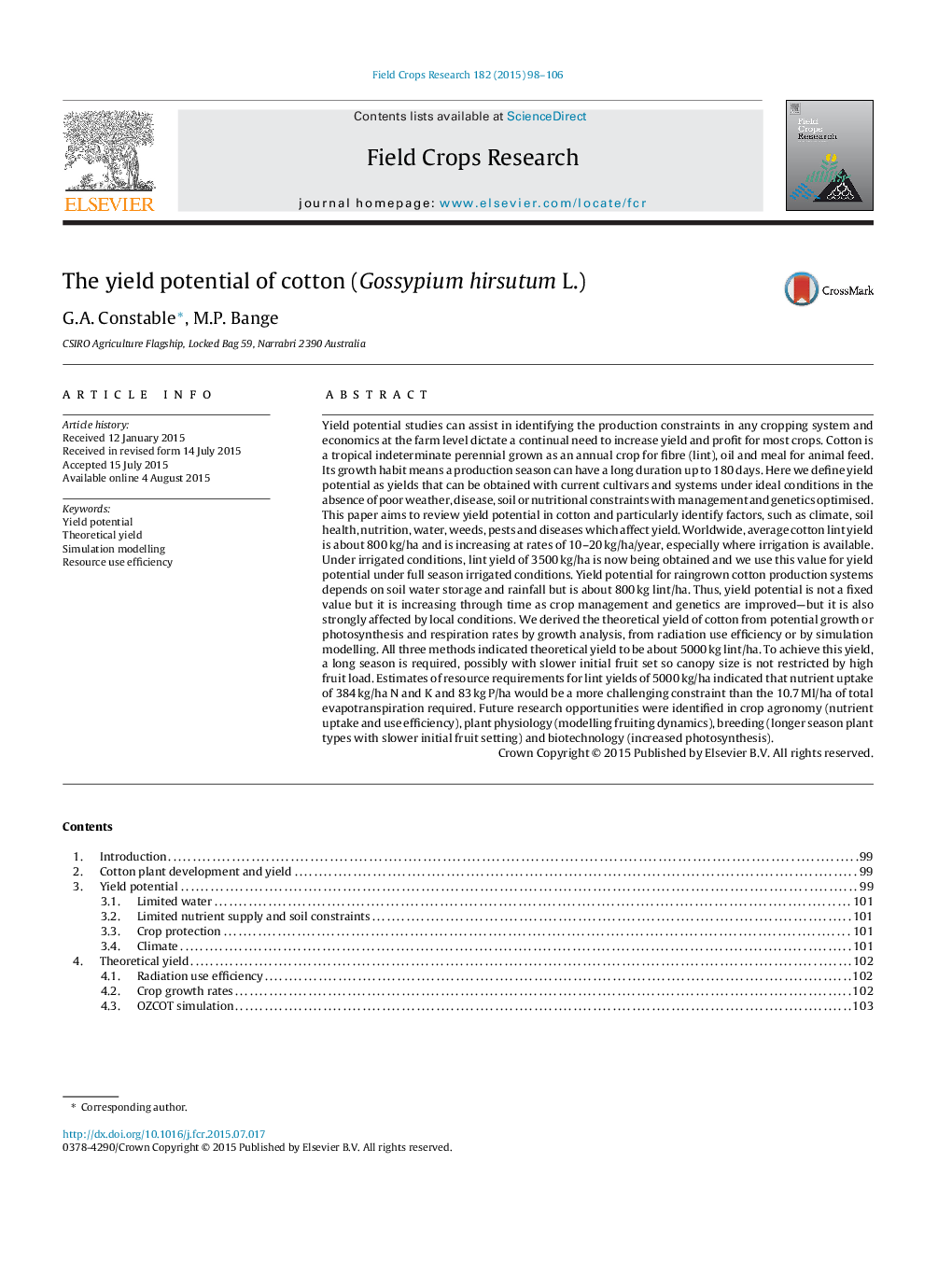| کد مقاله | کد نشریه | سال انتشار | مقاله انگلیسی | نسخه تمام متن |
|---|---|---|---|---|
| 4509872 | 1624681 | 2015 | 9 صفحه PDF | دانلود رایگان |

Yield potential studies can assist in identifying the production constraints in any cropping system and economics at the farm level dictate a continual need to increase yield and profit for most crops. Cotton is a tropical indeterminate perennial grown as an annual crop for fibre (lint), oil and meal for animal feed. Its growth habit means a production season can have a long duration up to 180 days. Here we define yield potential as yields that can be obtained with current cultivars and systems under ideal conditions in the absence of poor weather, disease, soil or nutritional constraints with management and genetics optimised. This paper aims to review yield potential in cotton and particularly identify factors, such as climate, soil health, nutrition, water, weeds, pests and diseases which affect yield. Worldwide, average cotton lint yield is about 800 kg/ha and is increasing at rates of 10–20 kg/ha/year, especially where irrigation is available. Under irrigated conditions, lint yield of 3500 kg/ha is now being obtained and we use this value for yield potential under full season irrigated conditions. Yield potential for raingrown cotton production systems depends on soil water storage and rainfall but is about 800 kg lint/ha. Thus, yield potential is not a fixed value but it is increasing through time as crop management and genetics are improved—but it is also strongly affected by local conditions. We derived the theoretical yield of cotton from potential growth or photosynthesis and respiration rates by growth analysis, from radiation use efficiency or by simulation modelling. All three methods indicated theoretical yield to be about 5000 kg lint/ha. To achieve this yield, a long season is required, possibly with slower initial fruit set so canopy size is not restricted by high fruit load. Estimates of resource requirements for lint yields of 5000 kg/ha indicated that nutrient uptake of 384 kg/ha N and K and 83 kg P/ha would be a more challenging constraint than the 10.7 Ml/ha of total evapotranspiration required. Future research opportunities were identified in crop agronomy (nutrient uptake and use efficiency), plant physiology (modelling fruiting dynamics), breeding (longer season plant types with slower initial fruit setting) and biotechnology (increased photosynthesis).
Journal: Field Crops Research - Volume 182, October 2015, Pages 98–106